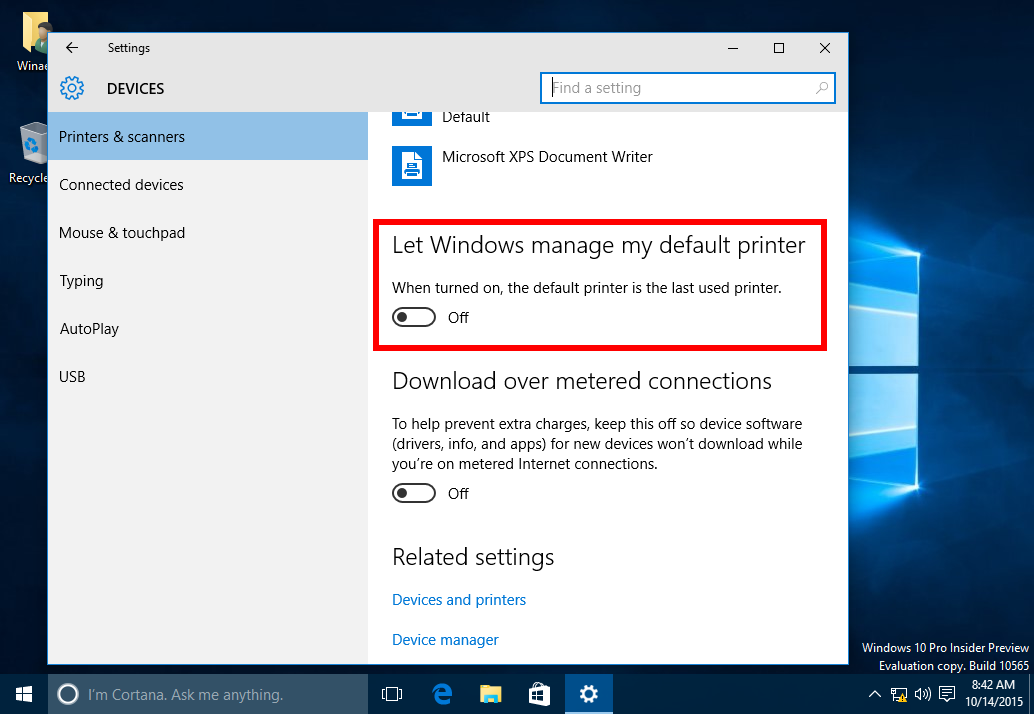Print Management Not Showing Up Windows 10
Posted By admin On 10.01.21- Windows 10 Print Management Download
- Where Is Print Management In Windows 10
- Print Management Not Showing Up Windows 10
- Print Management On Windows 10
- Print Command Windows 10
Windows Admin Center PC updates do not show as option while Server updates works When selecting 'Computer Management' there is not option to manage update like there is when managing Servers. Why can WAC not manage PC updates? Change print settings. In Windows, search for and open Devices and Printers. Right-click the icon for your printer, and then click Printing Preferences. Change any print settings, and then click OK. Scan: Scanning from the printer scan button or icon is not supported with the Windows built-in driver. When you choose Print from many programs, Windows 10 offers one last chance to spruce up your printed page. The Print dialog box, shown here, lets you route your work to any printer installed on your computer or network. While there, you can adjust the printer’s settings, choose your paper quality, and select the pages (and quantities) you. 1 Check Registry key. Having done this, type regedit in Start Search and hit Enter to open the Registry Editor. Right click on NameSpace New Key. This is the CLSID for the Printers folder.
In Windows 10, to add a printer to your computer, you need to create a print server port.
Windows 10 Print Management Download
Before you create the print server port, you need to configure your print server for the network. For more information about how to configure your print server, refer to the following FAQ: https://www.startech.com/faq/print-servers-pm1115u2-alternate-setup.
To create a print server port, complete the following:
- Press the Windows key.
- Click Settings >Devices > Bluetooth > Printers > Mouse >Add a printer >The printer that I want isn't listed.
- Select the Add a local printer or network printer with manual settings check box, and click Next.
- Select Create a new port.
- Change the type of port to Standard TCP/IP Port, and click Next.
- In the Hostname or IP address field, enter the IP address of the print server, and click Next.
- Click Custom >Settings >LPR.
- Under LPR Settings, enter a Queue Name. The queue name can be any set of numbers or letters.
- Click OK >Next.
- Select a driver from the list, and click Next.
- Click Next until you are asked if you want to print a test page. To confirm that the printer was successfully added, send a test page to your printer.
In short, the key function of Print Management is to control multiple print servers or printers. At the same time, it can give a fast performance about the reference resource for relevant driver information. If you need to use it, you have to access it firstly. Here, we will introduce the solutions as detailedly as possible to help you fastly open Print Management. ( See the photos below )
To easily open Print Management on Windows 10, you can carry out the following 4 ways. Here's how:
Where Is Print Management In Windows 10
Method 1: Open Print Management through the Run dialog box
Press Win+R keyboard shortcuts to open the Run dialog box, type printmanagement.msc in the box and click OK or tap Enter to run Print Management.

Method 2: Access Print Management by searching
Input print management or printmanagement.msc in the Taskbar Search box and choose it under Best match to open Print Management.
Method 3: Launch Print Management from Command Prompt(Admin)
Print Management Not Showing Up Windows 10
Step 1: Open Command Prompt as an administrator in Windows 10.
Step 2: In the Command Prompt(Admin) window, write printmanagement.msc and press Enter to open Print Management.
Print Management On Windows 10
Method 4: Start Print Management from Windows PowerShell(Admin)
Step 1: Run PowerShell as an administrator in Windows 10.
Step 2: In Windows PowerShell(Admin) window, type printmanagement.msc and click Enter to launch Print Management.
Print Command Windows 10
Related Articles
- Create a Shortcut for Print Management on Windows 10 Desktop
- Open Programs and Features in Windows 10
- 8 Ways to Access Event Viewer in Windows 10
- 3 Ways to Open Internet Options in Windows 10
- 5 Ways to Open Power Options Window in Windows 10
- How to Open File Explorer Option in Windows 10